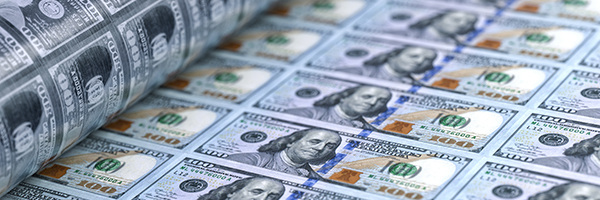Long Term

May 31, 2022 | Daily JAM, Long Term, Millennial, Special Reports, Top 50 Stocks, TSM |
There are bargains in this market. But how do you find them? Not, clearly, by looking to see what is cheaper than it was. The fear that’s stopping so many investors from loading up the truck now on Nvidia or Disney or Microsoft or Johnson Controls–all stocks that I really, really like for the long term–is that today’s “cheap” stocks will be tomorrow’s even “cheaper” stocks. So it’s time to dig into your investor’s toolbox and dust off those tried and true techniques for using company fundamentals to figure out the value of a stock. And for separating the real values in this sell off from those cheap stocks on the road to being cheaper.

May 17, 2022 | ALB, Daily JAM, DAL, DE, DIS, FQVLF, Long Term, MRVL, NVDA, PFE, SCCO, USB, Volatility |
In my weekend Saturday Night Quarterback I said that this week would, probably, answer the question of whether Friday’s big bounce was just a bounce, the start of a buy on the dip rally, or even a bear market rally with a bit of staying power. Two days into the week I think the market action is moving in favor of a bear market rally, one of those often quite powerful upside moves that punctuate extended bear markets.

May 2, 2022 | CMI, Daily JAM, DNNGY, ES, FQVLF, JCI, LICY, Long Term, SCCO, Special Reports, Top 50 Stocks |
All you have to do to find the high profits that will make the risk of investing in climate change stocks worthwhile is to focus on sectors (1) where the rewards are solid and the risk is quantifiable, (2) where companies are making profit the old-fashioned way by building out networks and then charging high rents to use them, by (3) carefully targeting a few technologies (wind and solar and hydrogen and electric cars) that will be part of any mix of solutions, and (4) by investing in bottlenecks that are likely to drive prices up (and provide good profits for companies that resolve the bottleneck.

April 22, 2022 | Daily JAM, Long Term, You Might Have Missed |
A study published today, Friday April 22, from the Center on Research on Energy and Clean Air says that at least 18 new coal plant projects abroad will probably go ahead despite China’s pledge to stop building coal power plants overseas. The plants have secured financing and permits. In addition, China’s Premier Li Keqiang confirmed a goal of 300 million tons of new coal production capacity in 2022, up from 220 million tons added last year. China already consumes and produces about half the world’s coal.

April 5, 2022 | AMD, C, Daily JAM, KBWB, Long Term, NVDA, Special Reports, WFC |
I think these financial market curves will let you map out the longer stories of Federal Reserve interest rate increases and a potential recession–and then chart the shorter stories of war in the Ukraine, global oil and natural gas crunches, summer Pandemic relief, global food crisis, computer chip shortages (and whatever else you think might be important) under those longer curves. That will let you decide when to buy and sell (and what) in order to profit from short-term stories while preparing your portfolio for the longer arcs.

March 11, 2022 | AAPL, Daily JAM, Jubak Picks, Long Term, Videos |
This week, my Quick Pick is Apple (AAPL). I wrote a post about a month ago, saying that Apple would be a stock to buy place ahead of its new product event on March 9 (and the traditional fall announcement of more new products.). And I think the reveal yesterday had promising new products likely to boost sales. There’s a new iPad Air, an improved iPhone SE (the cheapest iPhone), and new generations of Mac computers all with Apple’s new in-house M1 chip. The stock has fallen a bit so far this year, but hasn’t been hammered as much as other tech stocks, and I think the potential for huge sales of these new items make it a good holding over the next year.

February 14, 2022 | Daily JAM, Long Term, Special Reports |
To get to my 10 picks for my Special Report: A New Core Portfolio for a New Market, let me start with the second half of that title, the new market part. Why do I think we’re headed into a new market–and what kind of stock is this new market likely to reward with gains? And then onto my 10 picks for a New Core Portfolio.

February 11, 2022 | Daily JAM, Long Term |
I want to get these thoughts up on the investing consequences of a period where market history is an unreliable guide to future market behavior before I post my newest Special Report: “A New Core Portfolio for a New Market–10 picks.” The 5 strategy conclusions I’m putting out today certainly feed into my thinking about the nature of the new market. I’ll be working on that that Special Report over the weekend and will post it on Monday, February 14, just in time for Valentine’s Day.

January 3, 2022 | Daily JAM, Long Term, You Might Have Missed |
The yield on the 10-year Treasury is up 11 basis points as of 1:30 p.m. New York time today, Monday, January 3, to 1.62%. That’s the first time the yield has been above 1.60% since the emergence of the Omicron Variant in November.

December 30, 2021 | Daily JAM, Long Term, Stock Alerts, Top 50 Stocks |
We’ve got just two more trading sessions left in 2021. And then it’s on to 2022. Which means you should have wrapped up–or making any last minute sells–to harvest tax losses from 2021 in the next day or so. Of course, being the tax-savvy investor that you are, you have postponed taking profits on big winners in 2021 until 2022. (I’ll have an update on January profit-taking in the week after New Years.)

December 10, 2021 | Daily JAM, Long Term, SMNNY, Top 50 Stocks, Videos |
I’m starting up my videos on JubakAM.com again–this time using YouTube as a platform. My seventy-ninth YouTube video “QuickPick Shimano Update” went up today.

December 8, 2021 | Daily JAM, JCI, Long Term, Stock Alerts, Top 50 Stocks |
Johnson Controls International (JCI) raised its quarterly dividend to 34 cents a share, a 26% increase, effective with the dividend payment payable on January 14, 2022. (The record date for owning the shares in order to collect the dividend is December 20, 2021.)















